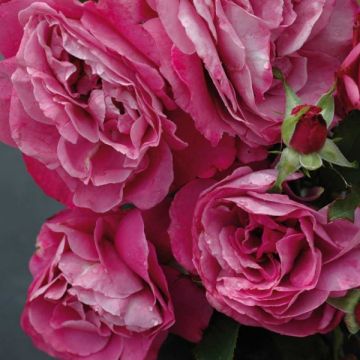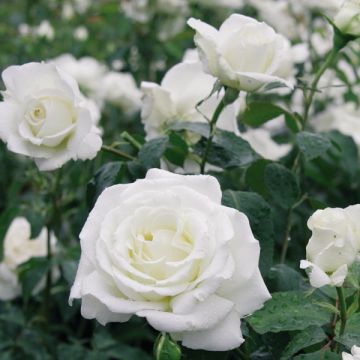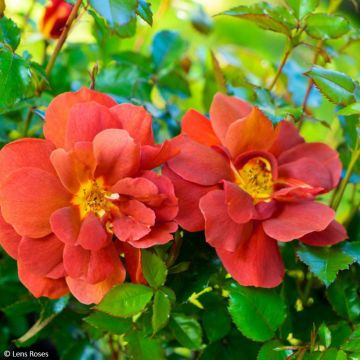Paese di consegna e lingua
La tua posizione sembra essere:
La tua posizione è:
Per godere della migliore esperienza sul nostro sito, è possibile cambiare:
Paese di consegna:
Andorra
Austria
Belgio
Bulgaria
Canada
Cechia
Cile
Cipro
Croazia
Danimarca
Estonia
Finlandia
Francia
Germania
Grecia
Irlanda
Islanda
Italia
Lettonia
Lituania
Lussemburgo
Malta
Monaco
Paesi Bassi
Polonia
Portogallo
Regno Unito
Romania
Slovacchia
Slovenia
Spagna
Svezia
Svizzera
Ungheria
Consegniamo solo articoli nelle categorie semi e bulbi nel tuo Paese. Se aggiungi altri articoli al carrello, questi non potranno essere spediti.
Lingua:
Francese
Tedesco
Spagnolo
Inglese
Il mio account
Salve
I miei elenchi di preferiti
Plantfit
Il mio carrello
Accesso / Registrazione
Sei già cliente?
Non sei ancora cliente?
Crea il tuo account per poter seguire il tuo ordine, accedere al nostro servizio clienti e, se lo desideri, approfittare delle nostre prossime offerte.


Rosier arbustif ou grimpant Princesse Sibilla de Luxembourg®


Rosier arbustif ou grimpant Princesse Sibilla de Luxembourg®
Rosa rampicante Princesse Sibilla de Luxembourg
Rosa Princesse Sibilla de Luxembourg 'orafantanov'
Rosa rampicante, Rosa polyantha
Vedi altre varietà simili in stock
Vedi tutti →Più di per avere il tuo ordine spedito oggi stesso.
Inviato per lettera da 3,90 €.
Spese di spedizione da 5,90 €. Articoli di grandi dimensioni, spese di spedizione a partire da 6,90 €.
Altre informazioni
Questo articolo non è disponibile per il tuo paese.
Paese di consegna:
Andorra
Austria
Belgio
Bulgaria
Canada
Cechia
Cile
Cipro
Croazia
Danimarca
Estonia
Finlandia
Francia
Germania
Grecia
Irlanda
Islanda
Italia
Lettonia
Lituania
Lussemburgo
Malta
Monaco
Paesi Bassi
Polonia
Portogallo
Regno Unito
Romania
Slovacchia
Slovenia
Spagna
Svezia
Svizzera
Ungheria
Programmare la data di consegna,
e scegliere la data nel carrello
24 mesi garanzia di permuta su questa pianta
Altre informazioni
Garantiamo la qualità delle nostre piante per un intero ciclo di crescita e sostituiremo a nostre spese qualsiasi pianta che non si riprenda nelle normali condizioni climatiche e di impianto.
A partire da 5,90 € per la consegna a domicilio e 6,90 € per la consegna a domicilio
Consegna a domicilio espressa in 24-48 ore: 8,90 €.
A partire da 5,90 € per la consegna a domicilio e 6,90 € per la consegna a domicilio
Consegna a domicilio espressa in 24-48 ore: 8,90 €.
Questa pianta è adatta al mio giardino?
Creo il mio profilo Plantfit →
Descrizione del prodotto
The rose Princess Sibilla de Luxembourg ®, little known despite its magnificent track record, is interesting for its flexible and trailing growth habit, allowing it to be used in the garden as a shrub or as a small climbing plant for training on a trellis. Its purple flowers are semi-double and wavy, revealing a light throat and a pretty heart of yellow stamens. Their subtle and refined musky scent perfumes the air. They gather in bouquets that bloom for several months, until early autumn, in successive waves. It is a versatile rose, original, full of charm, and disease-resistant. A very beautiful combination with the rose Westerland!
The rose Princess Sibilla de Luxembourg 'Orafrantanov' was bred and introduced to the market in the 2000s by the Orard rose gardens, a family business located in Feyzin, not far from Lyon. This creation, awarded on 3 continents, boasts an impressive track record:
- Gold Medal, ROME, BADEN-BADEN, NAGAOKA (Japan) 2007
- Silver Medal, MONZA, GENEVA, ADELAIDE (Australia) 2007
- Best Landscaping Rose and Most Beautiful Rose Award, BARCELONA 2007
It is a repeat-flowering variety, producing medium-sized flowers, rain-resistant, grouped in generous clusters. The June bloom is massive, renewing in waves throughout the summer, with a generous autumn rebloom. The bush, with a flexible growth habit and arching stems, will quickly reach 1 m in height by 90 cm in width if left unpruned. Trained against a support and shaped, it can climb up to 1.50 or 2 m in height, or even more according to sources and growing conditions. Its semi-double roses are composed of beautifully wavy edged petals. The mauve to purple colour turns to blue and old rose as they fade, the base is almost white with a hint of yellow. They open to a heart of yellow stamens. Each flower releases a subtle musky scent. The foliage is cut into toothed leaflets of a light and vibrant green, not very susceptible to diseases under good growing conditions. The plant is devoid of leaves in winter.
The rose Princess Sibilla de Luxembourg, unconstrained and free, is a very attractive shrub, perfect for large flowerbeds and flowering hedges that it enlivens for long months. It pairs perfectly with lilacs, philadelphus or buddleias for example. Trained to climb, it beautifully dresses trellises, pergolas or shrubs. To accompany it, choose a clematis with blue or white flowers, or a pale yellow, orange, pink, white or purple climbing rose.
Rosa rampicante Princesse Sibilla de Luxembourg in foto...


Porto
Fioritura
Fogliame
Botanici
Rosa
Princesse Sibilla de Luxembourg 'orafantanov'
Rosaceae
Rosa rampicante, Rosa polyantha
Orticola
Rose a fiore grande a cespuglio: Altre varietà
Piantagione e cura
Plant your Princess Sibilla de Luxembourg Rose in a sunny or lightly shaded position. Modern roses are tolerant but won't appreciate an excess of limestone. They will adapt to any garden as long as the soil is well worked and rich enough. To plant your rose, work the soil by crumbing it well and putting an amendment at the bottom of the planting hole, such as dried blood or dehydrated horn. Water generously after planting to eliminate air pockets. Water regularly for a few weeks to facilitate rooting. Pruning English roses is essential for flowering. At the end of winter, shorten the branches to 3-5 eyes above the ground (at the lowest), choose an eye pointing outwards for a more elegant shape. Take advantage of this pruning to remove dead wood and unsightly branches. Pruning is done at an angle above an eye. As the flowers bloom, remove faded flowers, this stimulates the development of other buds.
Quando piantare?
Per quale località?
Trattamenti
Questo articolo non è ancora stato recensito; sii il primo a condividere la tua esperienza.
Rosiers par utilisation
Non hai trovato quello che cercavi?
La rusticità è la temperatura invernale più bassa che una pianta può sopportare senza subire gravi danni o addirittura morire. Tuttavia, la rusticità è influenzata dalla posizione (zona riparata, come un patio), dalla protezione (copertura invernale) e dal tipo di terreno (la rusticità è migliorata da un terreno ben drenato).

Condizioni generali di utilizzo del servizio fotografico per clienti
Al fine di favorire l'interazione e la condivisione di esperienze tra giardinieri, Promesse de fleurs offre diversi servizi che consentono di caricare contenuti sul proprio Sito, in particolare attraverso il modulo "Condivisione foto".
L'Utente si impegna a non:
- Pubblicare contenuti illegali, pregiudizievoli, ingiuriosi, razzisti, che incitano all'odio, revisionisti, contrari alla pubblica decenza, che violano la privacy o i diritti privati di terzi, in particolare il diritto all'immagine delle persone e dei beni, i diritti di proprietà intellettuale o il diritto alla privacy.
- Pubblicare contenuti per conto di terzi.
- Impersonare un terzo e/o pubblicare informazioni personali su un terzo.
In generale, l'Utente si impegna ad astenersi da qualsiasi comportamento non etico.
Tutti i Contenuti (in particolare testi, commenti, file, immagini, foto, video, opere, ecc.), che possono essere oggetto di diritti di proprietà, diritti di proprietà intellettuale, diritti di immagine o altri diritti privati, restano di proprietà dell'Utente, fatti salvi i diritti limitati concessi dalla licenza definita di seguito a Promesse de fleurs. Gli Utenti sono liberi di pubblicare o meno tali Contenuti sul Sito, in particolare tramite il servizio "Condivisione foto", e accettano che tali Contenuti diventino pubblici e liberamente accessibili, in particolare su Internet.
Essi riconoscono, si impegnano e garantiscono di disporre di tutti i diritti e le autorizzazioni necessarie per tale pubblicazione sul Sito, in particolare per quanto riguarda la legislazione in vigore e i diritti di privacy, di proprietà, di proprietà intellettuale, di immagine, contrattuali o di qualsiasi altra natura. Pubblicando tali Contenuti sul Sito, l'Utente è consapevole di assumersi la responsabilità di editore dei Contenuti ai sensi di legge e concede a Promesse de fleurs una licenza non esclusiva, gratuita e mondiale per tali Contenuti, per tutta la durata della loro pubblicazione, compresi i diritti di riproduzione, rappresentazione, caricamento, visualizzazione, esecuzione, trasmissione e archiviazione.
Gli Utenti autorizzano inoltre l'associazione del loro nome al Contenuto e accettano che tale associazione non sia sempre possibile.
Con la loro pubblicazione, gli Utenti autorizzano i Contenuti a diventare automaticamente accessibili su Internet, in particolare su altri siti e/o blog e/o pagine web del sito Promesse de fleurs, comprese in particolare le pagine dei social network e il catalogo Promesse de fleurs.
Gli Utenti possono liberamente ottenere la restituzione dei Contenuti affidati contattando il servizio clienti tramite il modulo di contatto.
I periodi di semina indicati sul nostro sito web si riferiscono a Paesi e regioni all'interno della Zona USDA 8 (Francia, Regno Unito, Irlanda, Paesi Bassi).
Nelle zone più fredde (Scandinavia, Polonia, Austria...), ritardare le semine all'aperto di 3-4 settimane o seminare sotto vetro.
Nei climi più caldi (Italia, Spagna, Grecia, ecc.), anticipare la semina all'aperto di qualche settimana.
Il periodo di raccolta indicato sul nostro sito web si riferisce ai Paesi e alle regioni della zona USDA 8 (Francia, Inghilterra, Irlanda, Paesi Bassi).
Nelle zone più fredde (Scandinavia, Polonia, Austria...) la raccolta di frutta e verdura potrebbe essere ritardata di 3-4 settimane.
Nelle zone più calde (Italia, Spagna, Grecia, ecc.), la raccolta avverrà probabilmente prima, a seconda delle condizioni meteorologiche.
Il periodo di semina indicato sul nostro sito web si riferisce a Paesi e regioni situati nella zona USDA 8 (Francia, Regno Unito, Irlanda, Paesi Bassi).
Varia a seconda del luogo di residenza:
- Nelle zone mediterranee (Marsiglia, Madrid, Milano, ecc.), l'autunno e l'inverno sono i periodi migliori per la semina.
- Nelle zone continentali (Strasburgo, Monaco, Vienna, ecc.), ritardare la semina di 2 o 3 settimane in primavera e anticiparla di 2 o 4 settimane in autunno.
- Nelle regioni montuose (Alpi, Pirenei, Carpazi, ecc.), è meglio piantare in tarda primavera (maggio -giugno) o in tarda estate (agosto-settembre).
Nei climi temperati, la potatura degli arbusti a fioritura primaverile (forsizia, spiree, ecc.) deve essere effettuata subito dopo la fioritura.
La potatura degli arbusti a fioritura estiva (lillà indiano, perovskia, ecc.) può essere effettuata in inverno o in primavera.
Nelle regioni fredde e con piante sensibili al gelo, evitate di potare troppo presto quando possono ancora verificarsi forti gelate.
Il periodo di fioritura indicato sul nostro sito web si riferisce a paesi e regioni situati nella zona USDA 8 (Francia, Regno Unito, Irlanda, Paesi Bassi, ecc.).
Varia a seconda della zona di residenza
- Nelle zone da 9 a 10 (Italia, Spagna, Grecia, ecc.), la fioritura avverrà da 2 a 4 settimane prima.
- Nelle zone da 6 a 7 (Germania, Polonia, Slovenia e regioni montuose inferiori), la fioritura sarà ritardata di 2 o 3 settimane.
- Nella zona 5 (Europa centrale, Scandinavia), la fioritura è ritardata di 3-5 settimane.































